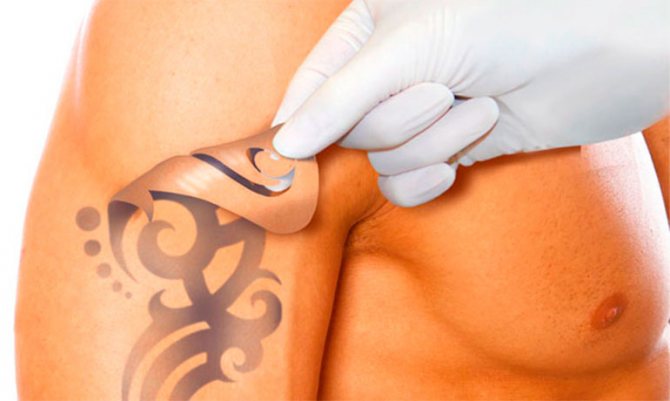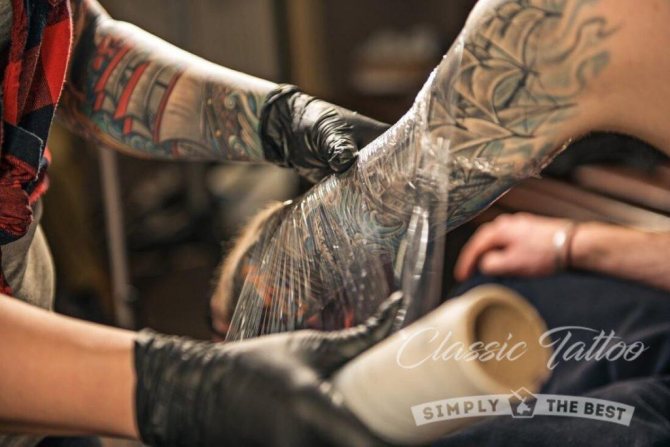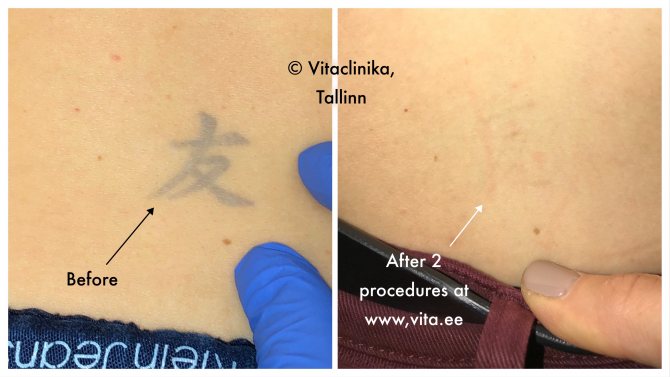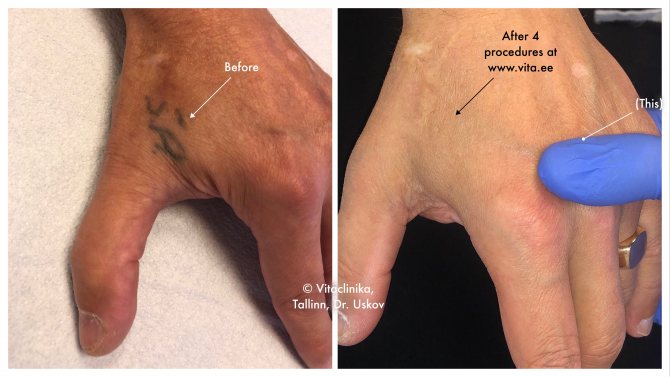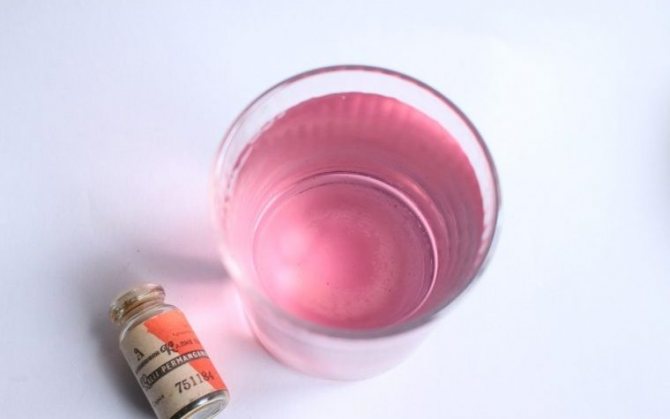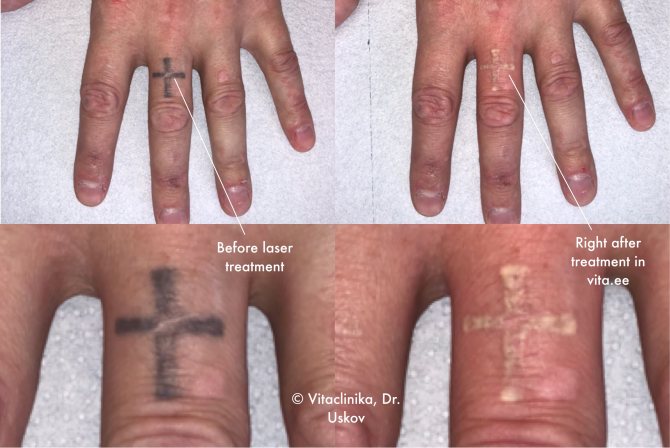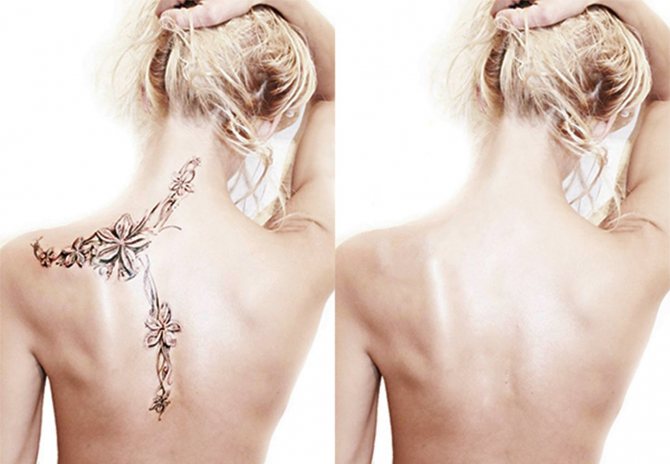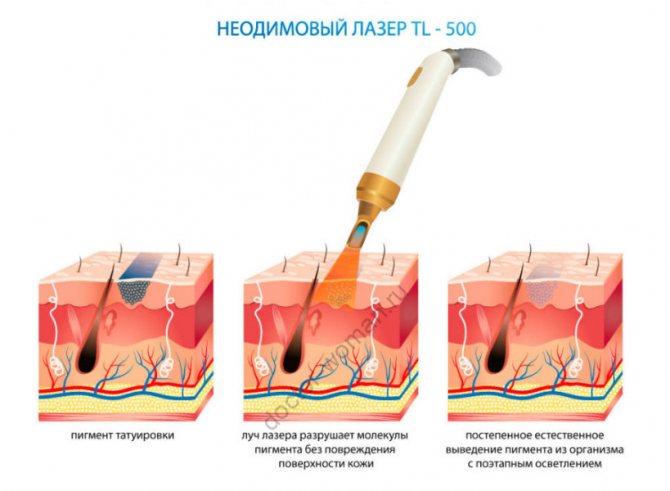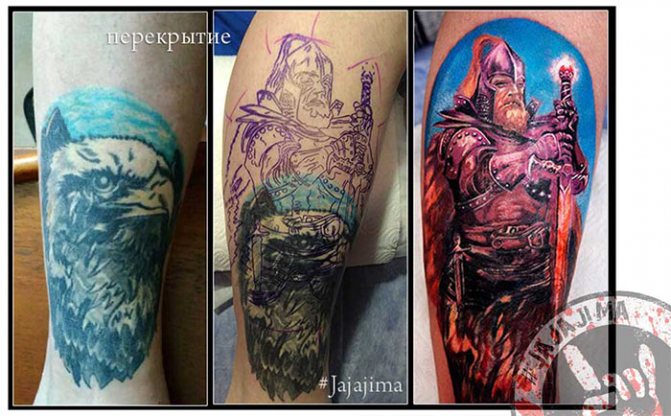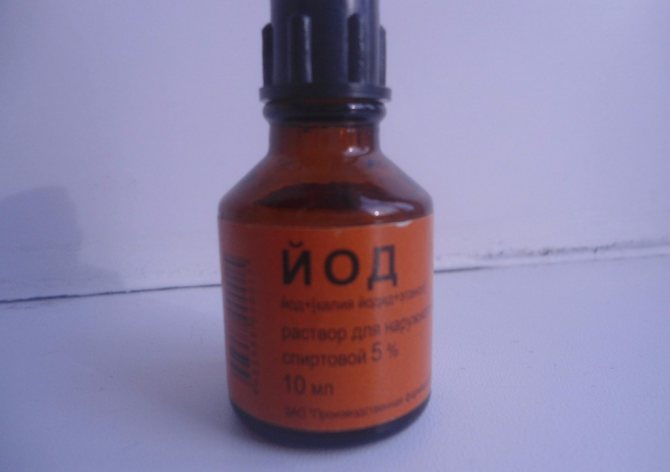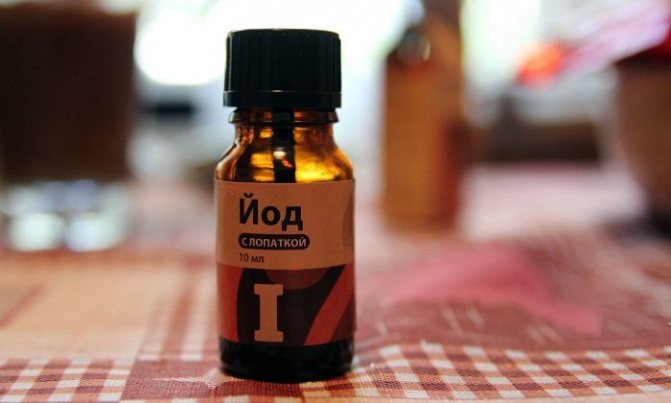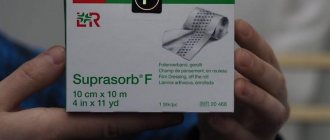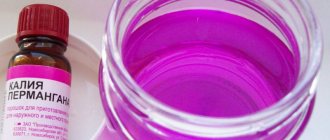Tattoos, or tattoos, is the application of permanent marks or inscriptions on the skin through the intentional introduction of insoluble dyes into the dermis.
Depending on the depth of pigment introduction, epidermal and dermal tattoos are distinguished.
The former are short-lived and disappear during the complete cycle of keratinocyte differentiation (2-3 weeks).
The dermal ones remain virtually unchanged for decades. Depending on the depth of incision and dye penetration, dermal tattoos, in turn, are divided into superficial (1/4 of the dermis thickness), medium (1/2 of the dermis) and deep.
Previously, to get rid of unwanted drawings used various "sadistic methods" - cauterization with potassium permanganate (manganese dioxide), burning with various methods.
With the advent of laser technology in practice, the process of tattoo removal became much more humane, unfortunately, we can not say that it became easy and painless.
In world practice to remove tattoos of various types one mainly uses two methods of laser influence - ablative removal with Er:YAG-laser and non-ablative removal with neodymium laser.
The latest scientific development was the picosecond lasers, but due to the high cost of the equipment they are not as widespread as Q-switched neodymium lasers.
Ablative removal.
During laser resurfacing with an Er:YAG-laser (Erbium laser), an area of skin with pigment is physically removed (vaporized). This is a way to remove tattoos of any color and origin.
Laser resurfacing gives excellent results when the dye is located in the superficial layers of the epidermis, which is possible with a high professionalism of the tattoo master.
However, in most cases, granules of dye, especially amateur "tattoos", old professional and some traumatic tattoos often end up deep in the dermal zone. Consequently, any attempt to remove such a tattoo by ablative method will result in a high degree of probability of postoperative scarring.
Manganese solution .
This method is also associated with certain risks. On sensitive skin, for example, a severe chemical burn can occur. Therefore, the elimination of the tattoo should be carried out with extreme caution.
The procedure is as follows:
- The dry powder is poured on the cleansed skin;
- Then it is carefully moistened with a sprayer;
- Cover with clingfilm and leave it on for another 3 or 4 hours.
Try not to apply manganese to clean areas of the skin.
After manipulation, a large ulcer will form. It is washed gently with warm boiled water and smeared with a healing cream (such as Spasatel). After the wound has healed, the treatment is repeated. This is done until the tattoo is completely gone.
Factors that affect the effectiveness of tattoo removal:
- The paint with which the tattoo or tattoo was made: very difficult to remove; the so-called "burnt" and pigments that are made on the basis of metal oxides. Well amenable to removal of most modern tattoo paints. The best removable tattoo ink and tattoo made with regular ink.
- Drawings that were applied to the skin decades ago are easier to remove than modern, applied in recent years.
- The depth to which the paint has been "driven" in. The laser beam only affects the top part of the pigment. Only after removing the top, rather thin layer of paint, the beam can act on the "next layer". The deeper and more paint has been driven in, the more procedures will be needed to remove it.
- The color of the paint has a huge impact on the effectiveness of tattoo removal. The darker the paint, the easier it is to remove. Therefore, black tattoos are most preferable for laser removal. The lighter the paint, the harder it is to remove. Paint close to flesh color, beige, green and yellow is almost impossible to remove with a laser.
- The patient's skin color. If the skin is swarthy, some of the beam energy is absorbed by the dark skin pigment, making the procedure less effective.
- The easiest tattoos are removed in the area of the chest, arms and legs, and buttocks, and on white skin they disappear most quickly.
- On fingers as well as in other places where the amount of fatty tissue is minimal, laser tattoo removal is longer. Scarring in the tattoo area (a consequence of tattooing or previous laser removal) slows down the removal of the pigment and sometimes makes it almost impossible
- Modern complex drawings require a long removal time. The reason for this is the intricacy of the design and the persistence of the ink.
After the complete removal of the black pigment, remains pigmentation of brown color, which absorbs for a long time (about 12 months), in persons prone to hyperpigmentation longer.
Advantages and disadvantages of tattoo removal at home
The only advantage of tattoo removal at home is cheapness, as all the necessary substances are available in any store or pharmacy.
To remove tattoos at home the following remedies are used:
- iodine;
- sea salt;
- ammonia alcohol;
- Manganese vinegar and others.
As for the disadvantages, they are quite numerous.
Disadvantages of removing tattoos at home:
- No method provides a 100% guarantee of tattoo removal;
- for its complete removal requires a lot of time;
- Almost all home methods leave scars;
- All options are to some extent unpleasant, and even painful;
- about sanitary standards and the dosage of the remedy will have to take care of themselves.
Since not all people turn to specialized salons, they need to remember: the extent to which the body will suffer after self-tattoo removal attempts, depends only on themselves.
Important point!
It is impossible to determine the exact number of tattoo removal sessions!
When a tattoo is exposed to a laser beam, it instantly becomes lighter (especially in the first sessions), due to the destruction of the upper pigmented layer, and then the color returns and may even become brighter, due to the lifting of the underlying pigment and only after about 2 months of the procedure you can see the final effect. Why? - you ask. Read the answer below.
The "flushing out" of the pigment destroyed into small particles occurs within a month and a half to two months. And if you think that the more often you go, the faster you get rid of it, it is not true. If you repeat the procedure earlier, the "not blurred" residual pigment prevents the removal of the pigment lying deeper, and the effectiveness of the procedure is negligible. The maximum effect after the removal procedure is manifested gradually over a period of one and a half to two months!
The effect of the first time. The greatest effect of the procedure is seen after the first removal. As the brightest, most pigmented layer is destroyed. Subsequent times will not bring you the same enthusiastic result.
Avoid the "Chinese".
Remember that the result depends not only on the color of your tattoo, but also on the machine that will be used for removal. The one made in the USA costs about a hundred thousand dollars. Not surprisingly, many salons and medical centers do not buy expensive "Americans", and their Chinese counterparts, whose price does not exceed four thousand bucks. But, unfortunately, budget "Asians" cope with the task much worse - after their influence the tattoo is "readable" on the skin: and let it be barely visible, the ideal purity and smoothness in this case is out of the question. Therefore, before you get into the hands of the first encountered master, be sure to ask him to show the documents on the device, where you can learn about the country of manufacturer.
Permanent makeup and the subtleties of its removal.
We have been familiar with the problem of tattoo removal for a long time. But permanent makeup removal has recently entered our lives in such a mass way. It is connected with the development of the beauty industry and the desire of the beautiful half of humanity to simplify their lives, excluding such a notion as classic makeup from their morning routine. But not always a permanent makeup brings the long-awaited result, and the reflection in the mirror is not happy in the morning. And then there is a question - how to get rid of it quickly? The answer is simple - with the help of the same laser systems.
The nuances of permanent makeup removal:
- Often the warm shades of permant after exposure to the laser become darker.
- Laser removal of the tattoo in one session is possible only in the eyelid area, because the depth of the pigment in this area is the uppermost layers of the epidermis, and the amount of the dye is negligible.
- Laser removal of eyebrow tattoo is a longer and more time-consuming process, as well as a similar procedure on the lips. This is explained by the depth of the pigment and the use of warm colors, as well as repeated corrections in order to get a richer color.
- After removal of permanent make-up, it is possible to use it again after a few months.
- If unwanted areas are camouflaged with flesh tones, you will not be able to use laser in the future. All flesh tones (especially white) contain titanium oxide. The laser beam simply does not see it!
- Laser removal of eyebrow tattoo is a painful procedure, which necessarily leads to discoloration of the hairs. But eyebrow growth is stimulated - a nice bonus of eyebrow tattoo removal. The color of the eyebrows is restored along with the growth of new hairs.
- The swelling of the eyelids goes down by about the third day.
- The use of decorative cosmetics is allowed when the skin is completely healed.
Ruby laser
The depth of penetration of such a beam into the skin is only 1 mm, so if the dye was introduced deeply, the laser will not be able to remove it. In addition to a number of colored tattoo pigments, the energy of the ruby laser is also absorbed by the natural skin pigment - melanin. Therefore, if the owner of the tattoo has not very light skin, the procedure on this laser can proceed with complications:
- burns;
- rough scars;
- white spots.
The procedure of removing a colored tattoo on the ruby laser can be performed only by a proven specialist: it is difficult to select the optimal settings on this device. As a result, the manipulation can be either ineffective or cause complications.
Skin care after tattoo removal
After the procedure, swelling and redness form in the area of laser treatment, which pass in 2-3 days, there may be small crusts that disappear within 7-10 days.
- Actively moisturize. Within 5-6 days we use special gels and creams (Panthenol spray, "Bepanten +", Solcoseryl).
- 7-10 days after the laser treatment of the skin should avoid visits to baths and saunas, gyms, massage rooms, swimming pools. It is also not recommended to swim in open reservoirs.
- Protect actively. To avoid hyperpigmentation (darkening of the sections to be treated by the laser) it is necessary to protect the skin from direct sun rays for 1,5 months. To this end, use creams with maximum protection. Another tip: the best time to remove drawings by laser is in the cold season.
- Drink a lot of water. Not less than 8-10 glasses a day, in order to accelerate the excretion of the pigment dye through the lymph.
So as not to deprive yourself of the pleasures of the summer season, our advice - the best time to remove tattoos - cooler seasons.
Where it is better to remove tattoos - at home or in a salon.
The final decision where it is better to remove the tattoo (at home or with the help of professionals), must be taken by the person.
But if he still decided to remove unwanted tattoos on their own, it is worth starting with more gentle methods. For example, a special cream or ointment for daily application. It is worth noting right away that these are not the most effective means compared to the work of a professional.
To avoid scars and chemical burns, it is better to remove the tattoo in the salon. On how properly selected the remedy will depend on the attractiveness of the body, on which previously painted the tattoo.
Contraindications for tattoo removal.
Despite the apparent simplicity of the method, there are many contraindications to tattoo removal:
- Fresh tan (after a natural tan or a visit to the tanning salon must pass at least 4 weeks);
- Photosensitization (hypersensitivity to sunlight, allergic to the sun);
- Taking medications that are classified as photosensitizers. These include hormonal contraceptives, tetracycline antibiotics and sulfonamides. They must be discontinued 2-4 weeks before the planned procedure.
- Taking vitamin A and isotretinoin the previous six months;
- Skin diseases (atopic dermatitis, eczema, psoriasis, herpes red, porphyria, etc.);
- Purulent inflammatory rashes in the affected area
- Acute infectious diseases (including exacerbation of herpes virus infection);
- Chronic diseases, including diabetes mellitus at the stage of decompensation.
- Mental illnesses;
- Epilepsy;
- Varicose veins and signs of thrombophlebitis in the laser area;
- Oncology
- The presence of metal prostheses, implants, "pacemaker" (artificial pacemaker);
- The tendency to form keloid scars;
- Disorders of the blood coagulation system
In the conclusion I would like to wish you to approach deliberately to a question of tattoos and to understand clearly whether it is necessary for you or not. Clearly weigh all pros and cons. After all, to reduce the tattoo is much longer and more expensive financially than to prick it.
Price for services
| LASER TATTOO REMOVAL TATTOO REMOVAL LASER Q-SWITCH, LASER COMPLEX MULTILINE, YAG | |||
| № | Name | Duration | Price, rubles |
| Tattoo removal | |||
| 1 | Up to 5 sq. cm | 5 min | 500 |
| 2 | Up to 20 sq. cm | 10 min | 1000 |
| 3 | Up to 100 sq. cm | 15 min | 2000 |
| 4 | up to 200 sq. cm (max) | 20 min | 3000 |
| Removal of permanent make-up | |||
| 5 | Eyebrow tip, arrow tip | 5 min | 500 |
| 6 | complete eyebrows, complete arrows | 10 min | 1000 |
| 7 | lip contour | 10 min | 1000 |

